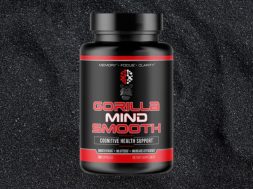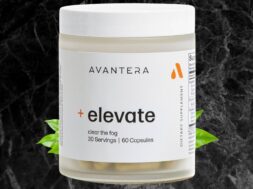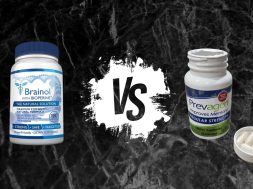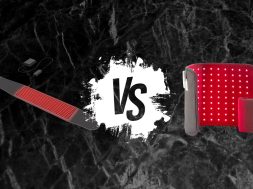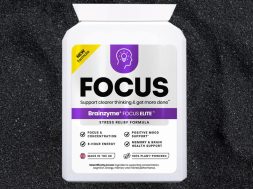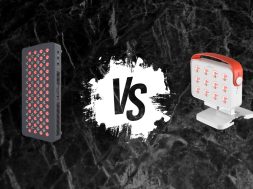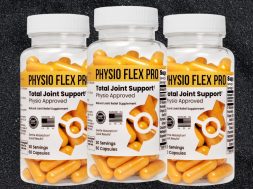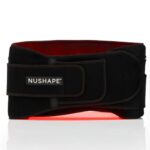
I Tried The Joovv Go 2.0 & Here’s My Experience (2025 Review
If you’ve been even remotely interested in red light therapy, chances are Joovv was one of the first names you came across, and for good reason. They’ve helped put red light therapy on the map with sleek devices, clinical backing, and a wellness-forward image that feels more Apple than infomercial.
The Joovv Go 2.0 is their compact, travel-friendly option. It’s portable, beautifully built, and loaded with features like pulsed light modes and app integration. But in a market that’s rapidly evolving with newer, laser-based options offering deeper recovery and hands-free use, does the Go 2.0 still hold its own?
After weeks of testing, comparing it against top contenders like the Kineon Move+ Pro, FlexBeam, and MitoQUAD, I’ve put Joovv’s popular pocket device to the test in real-world recovery sessions.
Whether you’re here to reduce inflammation, ease post-training pain, or just see if red light can actually make a difference, this review will give you the full picture.
Quick Verdict
Joovv Go 2.0 is a premium handheld device with excellent portability and build quality. It’s a great choice if you’re looking for a sleek, science-backed tool for small-area treatment and light recovery while traveling or at home.
But if your goal is faster recovery, deeper penetration, and hands-free, high-performance therapy, the Kineon Move+ Pro is a clear upgrade.
It’s more versatile, more effective, and ultimately delivers a better return on your investment for real, sustained results.
Pros
- Portable and compact, ideal for travel and daily use
- High-quality construction with premium materials and ergonomic grip
- Uses clinically supported wavelengths (660nm and 850nm)
- Delivers consistent relief for muscle soreness and joint tension
- Recovery+ mode with pulsed light enhances results for certain conditions
- Medical-grade safety certification builds trust in long-term use
Cons
- High price point for a handheld device ($499–$599)
- Small coverage area, making it not suitable for full-body use
- Session time is fixed at 10 minutes with no manual override
- Bluetooth app connection can be glitchy
- Requires cooldown between sessions, limiting back-to-back treatments
What is the Joovv Go 2.0?
The Joovv Go 2.0 is Joovv’s latest handheld red light therapy device, designed to bring the benefits of photobiomodulation therapy into a portable format. Unlike traditional red light panels that require you to stand or sit in front of them, the Go 2.0 puts targeted therapy literally in your hands.
The device combines both red (660nm) and near-infrared (850nm) wavelengths within the same LED lens, allowing you to get the benefits of both spectrums without switching between different modes or sacrificing coverage area.
What makes the Go 2.0 particularly interesting is its portability factor. Whether you’re traveling to competitions, spending long days at the gym, or just want the flexibility to use red light therapy while watching TV at home, this device promises to deliver clinical-grade therapy anywhere you need it.
The Go 2.0 also features several modes, including standard red and NIR options, Recovery+ mode (which uses pulsed light), and even an Ambient mode for gentle lighting.
All of these functions are controlled through Joovv’s smartphone app, making it surprisingly tech-forward for what’s essentially a light.
Joovv Go 2.0 Review
Design and Build Quality
First impressions matter, and the Joovv Go 2.0 delivers a solid first impression. The device feels substantial in hand, not heavy enough to cause fatigue during use, but hefty enough that you know you’re holding quality hardware.
The silicone grip is genuinely comfortable and form-fitting, which becomes important during those 10-minute treatment sessions.
The build quality is clearly premium. The housing feels durable, and the LED arrangement looks professional with none of the cheap, plasticky feel you get with some budget red light devices. The device measures about the size of a large smartphone, making it genuinely portable without being so small that treatment becomes inefficient.
During longer sessions, the device does warm up, but it never becomes uncomfortably hot. The device requires a cooldown period between 10-minute sessions, which shows Joovv took thermal management seriously.
The charging dock (when purchased with the bundle) is a nice touch. It’s sturdy, looks clean on a nightstand or desk, and makes the device feel more like a proper piece of equipment rather than just another gadget.
Ease of Use
Setting up the Go 2.0 took less than five minutes. The device arrived partially charged, and pairing with the app worked flawlessly on my iPhone. The initial setup wizard walked me through basic operation and safety guidelines without overwhelming technical jargon.
Daily operation couldn’t be simpler. Press the power button once for combined red and near-infrared treatment, twice for red only, three times for near-infrared only. The device remembers your last setting, saving precious seconds during rushed morning routines.
The mobile app integration initially excited me, but reality proved more complex. When Bluetooth cooperates, tracking sessions feels seamless. The app displays treatment history, suggests optimal usage patterns, and even sends reminder notifications. But connection issues struck roughly 30% of the time, forcing me to manually track sessions in my notes app.
The automatic 10-minute shutoff still frustrates me. While I understand the safety reasoning for preventing overexposure and potential tissue damage, the inability to adjust session length feels patronizing. Some mornings I want a quick 5-minute boost; other days, I’d prefer 15-minute deep tissue work on stubborn shoulder knots..
Performance and Effectiveness
After using the Go 2.0 consistently for over a month, focusing primarily on post-workout recovery and some chronic shoulder tightness, I can say it delivers noticeable results.
The device delivers red light at 660nm and near-infrared at 850nm, which are the wavelengths most supported by research for therapeutic benefits. The power output feels appropriate. You can definitely feel the warmth penetrating, but it’s not uncomfortable.
For post-training recovery, I noticed less soreness when using the device on major muscle groups immediately after heavy squat or deadlift sessions. The effect isn’t dramatic, but it’s consistent enough that I’ve made it part of my routine.
The Recovery+ mode, which uses pulsed light technology, seemed particularly effective for acute soreness. I can’t say definitively whether this is due to the pulsing or just the extended attention to the area, but subjectively it felt more effective than steady light.
The coverage area is reasonable for a handheld device. You can effectively treat a shoulder, knee, or similar-sized area in one session. For larger areas like the entire back, you’d need multiple sessions or different positioning.
Battery Life and Hardware
Battery performance is solid but not exceptional. On a full charge, I typically get 6-8 treatment sessions, depending on the intensity settings used. For most people using it once or twice daily, this means charging every 3-4 days.
The charging process is straightforward with the dock—just drop it in, and the LED indicators show charging status. Without the dock, you’re stuck with USB-C charging, which works but isn’t as convenient.
Build quality continues to impress after a month of regular use. No signs of wear, the buttons still feel responsive, and the LED array looks as bright as day one. The silicone grip has held up well despite regular handling.
One technical note: the device does require cooldown periods between sessions, which suggests the internal components run pretty warm. This isn’t a problem in practice, but it does mean you can’t just use it continuously if you want to treat multiple areas.
Price
The Joovv Go 2.0 costs $599 with the charging dock or $499 without it. That’s serious money for a handheld device, putting it in premium territory alongside high-end recovery tools.
Comparing specifications alone makes the price seem excessive. Competing portable devices with similar LED counts and wavelengths retail for $200-400. But, direct comparison misses crucial differentiators that partially justify the premium.
The medical-grade certification carries real value. Knowing the device underwent rigorous safety testing provides peace of mind when using it on sensitive areas like the thyroid or face. Cheaper alternatives often lack this certification, raising questions about long-term safety.
The modular ecosystem adds value for future expansion. The Go 2.0 integrates with Joovv’s larger systems, allowing synchronized treatments when you eventually upgrade. This compatibility doesn’t exist with standalone budget options.
How to Use the Joovv Go 2.0
Using the Go 2.0 is very straightforward:
Setup: Download the Joovv app, create an account, and pair the device via Bluetooth. This process takes about 5 minutes and only needs to be done once.
Treatment Selection: Choose your target area and condition in the app. The app provides recommended protocols for different body parts, skin conditions, and recovery needs.
Positioning: Hold the device 6-12 inches from your skin (specific distance depends on the treatment protocol). The app provides visual guides for optimal positioning.
Duration: Most treatments run 10 minutes with automatic shutoff. The device will warm up during use. This is normal and expected.
Frequency: Most protocols recommend daily use, though this varies by condition and individual response. Start with the app recommendations and adjust based on your experience.
Cool Down: Allow the device to cool for a few minutes between sessions if treating multiple areas.
The key is consistency. Like most recovery modalities, red light therapy works best when used regularly rather than sporadically.
Joovv Go 2.0 Benefits
Enhanced Recovery and Reduced Muscle Soreness
The primary benefit I experienced was improved post-workout recovery. After heavy training sessions using the Go 2.0 on major muscle groups seemed to reduce the duration and intensity of DOMS (delayed onset muscle soreness).
The mechanism here is well-supported by research: red and near-infrared light can enhance cellular energy production and reduce inflammatory markers. While I can’t measure my ATP levels at home, the subjective improvement in how I felt the day after hard training was consistent enough to be convincing.
Improved Joint Comfort and Mobility
This benefit became most apparent when treating my chronically tight left shoulder. Years of overhead pressing and grappling have left it perpetually cranky, and traditional treatments (stretching, massage, heat) only provide temporary relief.
After several weeks of targeted treatment with the Go 2.0, I noticed improved range of motion and less stiffness, particularly in the morning. The improvement wasn’t dramatic, but it was noticeable enough that I found myself reaching for the device whenever the shoulder started acting up.
Skin Health and Wound Healing
While not my primary use case, I did experiment with the Go 2.0 for minor cuts and scrapes from training. Red light therapy has solid research support for wound healing, and I did notice that small injuries seemed to heal faster when treated regularly.
The skin benefits extend beyond just wound healing. Some users report improvements in skin tone and texture, though this requires more consistent facial treatments than I was willing to commit to for this review.
Convenience and Portability
The biggest advantage of the Go 2.0 over panel-style devices is pure convenience. I could use it while watching film review, during commercial breaks, or even at the gym between training sessions. This flexibility made it much easier to maintain consistent use compared to having to set aside dedicated time for red light therapy.
The portability factor is genuinely useful for travel. Whether it’s competition trips or just weekend getaways, having effective recovery therapy that fits in a gym bag is valuable for athletes who maintain high training loads year-round.
Who Is the Joovv Go 2.0 For?
Serious Athletes and Active Individuals
If you’re training hard multiple times per week, the Go 2.0 can be a valuable addition to your recovery arsenal. The convenience factor alone makes it more likely you’ll actually use it consistently, which is crucial for any recovery modality.
The device particularly makes sense for athletes who travel frequently or train at multiple locations. Having consistent access to red light therapy regardless of where you are can help maintain recovery routines during periods of irregular schedule or increased stress.
People with Chronic Joint Issues
For individuals dealing with chronic joint pain or stiffness, whether from previous injuries, arthritis, or occupational wear and tear, the targeted application of the Go 2.0 can provide significant relief. The ability to treat specific problem areas multiple times per day makes it practical for managing chronic conditions.
The hands-free operation (when using the optional charging dock as a stand) also makes it accessible for people who might have difficulty holding a device for extended periods.
Busy Professionals Seeking Convenient Recovery
If you’re someone who recognizes the value of recovery therapies but struggles to find time for appointments or dedicated treatment sessions, the Go 2.0’s convenience factor is compelling. You can easily incorporate 10-minute sessions into existing routines while reading, watching TV, or working at a desk.
The premium price point also aligns with professionals who view health and performance optimization as worthwhile investments rather than optional expenses.
Who the Joovv Go 2.0 Isn’t For
The Go 2.0 isn’t ideal for people seeking maximum coverage area or the most cost-effective red light therapy. If your primary goal is full-body treatment or you’re working with a tight budget, a panel-style device will give you more bang for your buck.
It’s also not the best choice for casual users who might only use red light therapy occasionally. The premium price is harder to justify if the device will sit unused for weeks at a time. In those cases, a cheaper handheld alternative or even professional treatments might make more sense.
My Experience With the Joovv Go 2.0
Over the past month and a half of testing, the Go 2.0 has become a regular part of my routine in ways I didn’t initially expect. What started as post-workout recovery treatments evolved into a more comprehensive approach to managing the various aches and pains that come with training hard in your mid-thirties.
My typical usage pattern settled into post-training sessions on whatever body parts took the most abuse that day. After heavy squats or deadlifts, I’d target my lower back and glutes.
Following intense grappling sessions, it was usually shoulders and neck. The 10-minute treatment duration fit perfectly into my post-workout routine while I was already focused on recovery.
The most significant benefit I experienced was with my chronically problematic left shoulder. This joint has been an ongoing issue for years—tight, occasionally painful, and always the first to complain during overhead movements. After three weeks of near-daily treatments, I noticed genuine improvement in both mobility and comfort levels.
What impressed me most was the consistency of results. Unlike some recovery modalities that work sometimes but not others, the Go 2.0 delivered predictable benefits. This reliability made it easier to trust the device and incorporate it into my routine long-term.
The convenience factor cannot be overstated. Being able to get effective red light therapy while watching training footage or scrolling through my phone made it infinitely more likely that I’d actually use the device consistently.
Previous experience with panel-style devices showed me that if recovery tools require dedicated time and setup, they often get skipped when life gets busy.
Battery life proved adequate for my usage patterns. Charging every 3-4 days became routine, and the dock made this process mindless. The build quality held up excellently with no signs of wear or performance degradation despite regular use.
If I had to identify areas for improvement, I’d like to see slightly longer battery life and perhaps physical controls for basic functions rather than requiring the app for everything. These are minor complaints in the context of overall performance, but they would make the user experience even smoother.
Customer Joovv Reviews
Users consistently describe the Joovv Go?2.0 as a sleek, high-performance tool that delivers visible improvements, especially in skin glow, mood, and recovery.
One user on Joovv’s website shared, “My skin literally glows and I always get compliments. It’s a GAME changer,” after just a couple of months of nightly use. Another noted the device’s travel-friendly design, saying it “makes Joovv treatments even easier” and helps manage arthritis in hands while on the road.
Reviewers highlight how easy it is to integrate into daily routines, with one commenter remarking that it boosted energy and mood, particularly when used as part of a morning ritual
But not all feedback is glowing. Some users report frustrations with Joovv’s customer service. On Trustpilot, multiple customers describe difficulty reaching support, long waits, and being limited to chat or email—”no number to call”—leaving them feeling neglected.
Warranty and return issues have also been raised, with one customer saying their unit was lost in transit during repair, and long delays to resolution only added to the frustration.
Overall, the Joovv Go?2.0 earns high marks for its premium design, clinical credibility, and convenience, especially for skincare and post-workout recovery. But booking loyalty may be a challenge for those who might need robust customer support long-term.
Joovv Alternatives
Nushape Light Therapy Wrap
Instead of a compact handheld device, it offers full-body zone coverage through a flexible neoprene wrap embedded with hundreds of red and near-infrared LEDs.
It’s designed to be worn around the waist, thighs, or hips and operates passively, allowing you to go about your day while receiving treatment.
While it’s often marketed for fat loss and body contouring, its most noticeable benefits in real-world use include pain relief, improved skin texture, and enhanced post-workout recovery. Many users report better mobility, decreased inflammation, and reduced puffiness when incorporating it into their routine.
That said, the Nushape Wrap is bulkier, less portable, and doesn’t offer precision targeting like the Joovv Go 2.0. It’s also not ideal for quick spot treatments or joint-specific recovery.
But for people dealing with chronic back pain, postpartum skin changes, or simply looking to treat a larger surface area in a hands-free format, the Nushape is a serious contender. My Nushape review goes into detail about my experience with the light therapy wrap.
MitoQUAD Wavelength Belt
It uses an impressive quad-wavelength system (630nm, 660nm, 810nm, 850nm) to target both surface-level tissues and deeper muscle layers, which makes it a strong option for people with recurring lower back tension, tight hips, or high training volumes.
Unlike the Joovv Go 2.0, which is meant for quick and flexible use across multiple areas, the MitoQUAD is a fixed-position belt that wraps around the midsection. It’s designed more for passive use at home than for portable, on-the-go treatment.
However, what it lacks in mobility, it makes up for in power and efficiency. The dense LED layout ensures even coverage and consistent results across sessions, and it’s built with medical-grade materials that reflect its serious therapeutic intent.
If you’re an athlete or someone dealing with chronic discomfort in the lower body, the MitoQUAD offers a plug-and-play alternative to handheld tools. It’s not the most versatile for joint-specific work, and it’s not wireless, but for deep-tissue relief in the trunk and core, it’s one of the most capable devices in its class.
My Mito Red Light Therapy review goes into detail about my experience.
FlexBeam

The FlexBeam is a wearable red light therapy system designed for active users who want freedom of movement during treatment.
Unlike Joovv’s handheld approach, FlexBeam is made up of three light modules that can be strapped directly onto joints or muscles. That means you can walk around, stretch, or even go about your home routine while getting therapy, which removes a big barrier to consistency.
It delivers a blend of red (625–635nm) and near-infrared (810–845nm) light, and its compact, travel-friendly design makes it ideal for people with dynamic schedules or those recovering on the go.
In testing, the FlexBeam proved particularly helpful for post-training soreness, joint stiffness, and general muscle fatigue. While it doesn’t offer the same pinpoint intensity as devices like the Kineon Move+, it shines in flexibility and ease of use.
That said, the preset 10-minute treatment time can be limiting if you want to address multiple areas back to back, and the strap system can occasionally be tricky to position optimally.
Still, for athletes, martial artists, or anyone who doesn’t want to be tied to a wall or forced into a fixed routine, FlexBeam offers a comfortable middle ground between powerful recovery tools and daily convenience. You can read about my experience in my FlexBeam review.
Frequently Asked Joovv Questions
How long does each treatment session last?
Standard treatment sessions with the Go 2.0 last 10 minutes, with automatic shutoff built into the device. The app provides specific recommendations for different conditions and body areas.
Can I use the device every day?
Yes, daily use is generally recommended for most conditions. The app provides specific frequency guidelines based on your treatment goals. Some users find benefits with less frequent use, while others prefer twice-daily sessions.
Is it safe for all skin types?
Red light therapy is generally considered safe for all skin types, but individuals with certain medical conditions or medications that increase light sensitivity should consult healthcare providers before use. The Go 2.0 uses clinically-proven wavelengths that have extensive safety data.
How close should I hold the device to my skin?
Treatment distance varies by protocol, typically ranging from 6-12 inches from the skin. The app provides specific distance recommendations for different treatment types. Closer distances provide more intensity but cover smaller areas.
Will I feel anything during treatment?
Most users feel gentle warmth during treatment. The device should not cause pain or excessive heat. If you experience discomfort, increase the distance from your skin or reduce treatment duration.
How long before I see results?
Individual responses vary significantly. Some users notice improvements within the first week, while others require 3-4 weeks of consistent use. Research suggests that photobiomodulation benefits often accumulate over time with regular use.
Can I travel with the device?
Yes, the Go 2.0 is designed for portability. It meets airline carry-on requirements and comes with a travel case. The rechargeable battery eliminates the need for power outlets during short trips.
Do I need the charging dock?
The charging dock isn’t essential but adds significant convenience. Without it, you’ll need to charge via a USB-C cable. The dock also serves as a hands-free stand during treatments, which many users find valuable.
Summary
The Joovv Go 2.0 is a beautifully designed, highly portable red light therapy device that performs well in specific use cases. It delivers proven wavelengths (660nm and 850nm), is easy to operate, and its sleek construction and premium materials make it feel like a medical-grade tool, not a gimmick.
The addition of Recovery+ pulsed mode, a reliable battery, and app control makes it even more appealing to users who want a clean, science-backed experience for spot recovery.
That said, the Joovv Go 2.0 feels increasingly limited when compared to newer devices on the market. Its coverage area is small, the app is occasionally buggy, and the fixed 10-minute sessions can slow down multi-area treatment. It also lacks true hands-free operation, which becomes a nuisance over time if you’re using it frequently.
After testing several devices, the one that consistently outperformed Joovv in both effectiveness and convenience was the Kineon Move+ Pro. It delivers deeper, more targeted relief thanks to its laser-assisted light modules, straps directly onto joints and muscles, and allows you to move freely during treatment.
For athletes, active individuals, or anyone dealing with recurring pain and inflammation, Kineon offers a much more complete and long-term solution.
Kineon MOVE+ Pro
Kineon MOVE+ Pro
Powerful red light therapy device designed be applied without having to sit in front of a large light panel.
CHECK CURRENT DEALS
